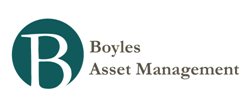Money and Finance
- Links
FT interview with Google co-founder and CEO Larry Page (LINK) Related books: How Google Works, In The Plex Henry Blodget sits down with Clay Christensen (LINK) Related books: HEREHussman Weekly Market Comment: Losing Velocity: QE and the Massive Speculative...
- Richard Duncan Quotes
Longer excerpt from The New Depression (taken from my Kindle highlights, so the excerpts aren’t necessarily the paragraphs I have put them in below, and there may be things in between that I didn’t highlight). “…the paper money creation by the...
- Richard Duncan Quotes
“Before 1971, currencies were pegged either directly or indirectly to gold. Therefore, there was nothing to be gained by creating fiat money in order to buy any other country’s currency. When the fixed exchange rate system ended with the collapse...
- Bridgewater On An Ugly Inflationary Deleveraging
I thought this was an interesting quote to keep in mind in light of the Fed's open-ended QE announcement today. If we ever start to reach “that phase”, someone please remind me of this excerpt. From a Bridgewater piece with the title “Asset...
- China’s Cash Pile Provides No Shield - By Edward Chancellor
China sits on the world’s largest foreign exchange reserves. Many people view Beijing’s $3tn cash pile as providing economic insurance for years to come. From this perspective, the fact that China has just produced its first quarterly balance of payments...
Money and Finance
Richard Duncan quotes
Longer excerpt from The New Depression (taken from my Kindle highlights, so the excerpts aren’t necessarily the paragraphs I have put them in below, and there may be things in between that I didn’t highlight).
“As central banks accumulate foreign exchange reserves, whether in the form of dollars, Euros, pounds, or yen, they invest them in order to generate income. It is important to understand that they cannot invest reserves in their own economies without first converting the foreign currencies into the domestic currency. That, of course, would push up the value of the domestic currency and defeat the purpose of buying the reserves in the first place. So that is not an option.
The simplest course is to invest the foreign currency into investment vehicles denominated in that currency; and that is normally what is done. For instance, dollar reserves are invested in dollar-denominated bonds, euro reserves in euro-denominated bonds and so on. However, it is possible for the central bank holding the reserves to convert one currency into another and then to invest the money into investment vehicles denominated in the second currency. A central bank might wish to diversify its foreign reserve portfolio to reduce the weighting held in dollars, for example. However, the extent to which this actually does occur is limited for reasons both political and economic.…If China used its dollar reserves to buy yen, for instance, it would push up the yen and damage Japan’s exports. The Japanese government would protest and China would have to stop buying yen or else face retaliation from Japan. Therefore, relatively little diversification occurs.
The U.S. government, however, simply did not issue enough bonds to satisfy $5 trillion worth of demand from foreign central banks. Exhibit 2.6 illustrates the large gap between the amount of dollars central banks outside the United States accumulated as foreign exchange reserves and the amount of bonds the U.S. government sold.
Between 1996 and 2007, the government sold $1.25 trillion in new debt, while the cumulative increase in dollar reserves amounted to $3.96 trillion. In other words, the central banks accumulating those dollar reserves could have bought every new U.S. government bond sold between 1996 and 2007 and still had $2.7 trillion left over to invest in other dollar-denominated assets.”
–Richard Duncan, The New Depression
- Links
FT interview with Google co-founder and CEO Larry Page (LINK) Related books: How Google Works, In The Plex Henry Blodget sits down with Clay Christensen (LINK) Related books: HEREHussman Weekly Market Comment: Losing Velocity: QE and the Massive Speculative...
- Richard Duncan Quotes
Longer excerpt from The New Depression (taken from my Kindle highlights, so the excerpts aren’t necessarily the paragraphs I have put them in below, and there may be things in between that I didn’t highlight). “…the paper money creation by the...
- Richard Duncan Quotes
“Before 1971, currencies were pegged either directly or indirectly to gold. Therefore, there was nothing to be gained by creating fiat money in order to buy any other country’s currency. When the fixed exchange rate system ended with the collapse...
- Bridgewater On An Ugly Inflationary Deleveraging
I thought this was an interesting quote to keep in mind in light of the Fed's open-ended QE announcement today. If we ever start to reach “that phase”, someone please remind me of this excerpt. From a Bridgewater piece with the title “Asset...
- China’s Cash Pile Provides No Shield - By Edward Chancellor
China sits on the world’s largest foreign exchange reserves. Many people view Beijing’s $3tn cash pile as providing economic insurance for years to come. From this perspective, the fact that China has just produced its first quarterly balance of payments...

